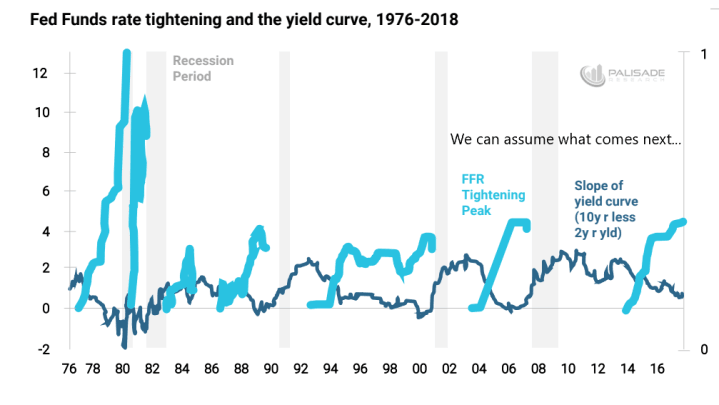Former Federal Reserve Chairman – Ben ‘Helicopter’ Bernanke – just threw cold water on the mainstream growth narrative. He said the economy by 2020 is going to go right over the cliff.
Q1 hedge fund letters, conference, scoops etc, Also read Lear Capital: Financial Products You Should Avoid?
Although rarely – I do agree with Helicopter Ben about something. . .
President Trump’s $1.5 trillion in personal and corporate tax cuts – plus $300 billion in increased federal spending – was done at the “very wrong moment.”
The huge tax cuts and government spending requires a significant amount of new debt to be issued, all while the Fed’s tightening and unwinding their balance sheet via Quantitative Tightening (QT).
This is going to cause an evaporation of dollar liquidity – making the markets extremely fragile.
Putting it simply – the soaring U.S. deficit requires an even greater amount dollars from foreigners to fund the U.S. Treasury. But if the Fed is shrinking their balance sheet, that means the bonds they’re selling to banks are sucking dollars out of the economy (the reverse of Quantitative Easing which was was injecting dollars into the economy). This is creating a shortage of U.S. dollars – which is the world’s reserve currency – therefore affecting every global economy.
This illiquidity is going to cause the oil that greases the wheels of markets to dry up – fast.
So, with the dollar shortage making matters worse – we also have the fact that there’s never been a time when the Fed began tightening and it didn’t lead to negative economic growth or a market crisis.
The historic evidence of the Fed’s rate hikes – and the inverting yield curve – right before a recession is irrefutable.
Take a look at over the last 40 years. . .
As the Fed continues their rate hikes and QT, the over-indebted system becomes illiquid and more fragile. Things will eventually crack.
The protégé of Austrian Economist Ludwig Von Mises – Murray Rothbard – once asked a series of questions that stumped many economists defending the Fed.
From his book America’s Great Depression, he called these ‘The Sudden Cluster of Errors’, which were. . .
- Most businesses in the economy generate steady profits and can service their debts fine. Then suddenly, without warning, conditions change, and the bulk of businesses begin posting huge losses and can’t pay their creditors.
- How did all these astute business men, MBA graduates, and ‘professional’ forecasters make such huge errors together. And – most importantly – why did it all suddenly happen at this particular time?
- Why do the capital goods industries – raw materials, construction, etc – fluctuate much more wildly than the consumer goods industries? During recessions you see home construction firms belly up, but places like GAP and Hollister survive.
The explanation is the Fed’s artificial moving of rates up after keeping them down for years triggers the harsh bust.
And when it happens – it happens very fast. Just like the single beautiful snowflake that will cause the violent avalanche – it took years to build up, but only a few moments to wipe everything out.
If we’re thinking about these ‘tipping points’, we need to think about the Chinese bamboo tree.
If you plant the seeds for the bamboo tree, for the first 5 years you won’t see anything sprout – you’ll probably forget it was even there. Until the beginning of the 6th year – suddenly a small sprout will appear from the ground. And within the next 6 weeks that sprout will grow 90 feet in height.
This type of Asymmetric development (slow start – fast finish) is an example of ‘Critical Mass’. . .
It’s a physics term but has significant use when looking at the economy from a complex system viewpoint – as it always should.
Putting it simply, Critical Mass in laymen term is ‘the last straw that breaks the camel’s back’.
It’s not like during those five years in the soil the bamboo seed wasn’t doing anything. It was taking its time deepening its roots and harnessing energy. Then once the Critical Mass was reached – growth went parabolic.
Just like the markets over the last couple of years of Fed tightening – only because we don’t see what’s brewing underneath the surface doesn’t mean things aren’t happening.
Another thing learned from Complex Systems is that the larger the system is, the more energy it requires. And in overindebted economies – that means more dollars are required.
As government deficits soar and need constant funding, and bloated corporations are up to their necks in debt – they need even more dollars and even lower rates if they plan to not crack.
Unless the Fed reverses their tightening soon, things can get very ugly – and very fast.






